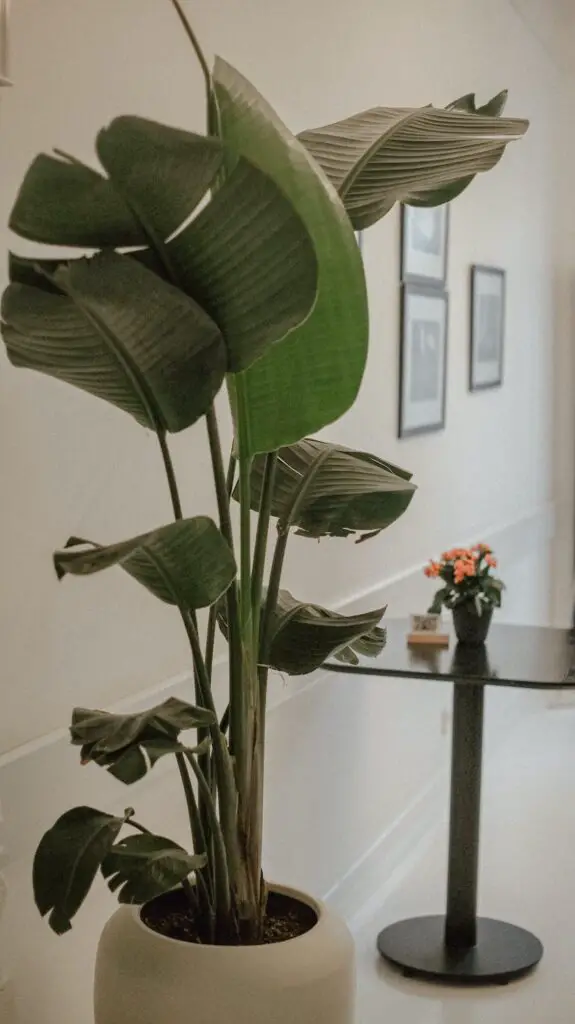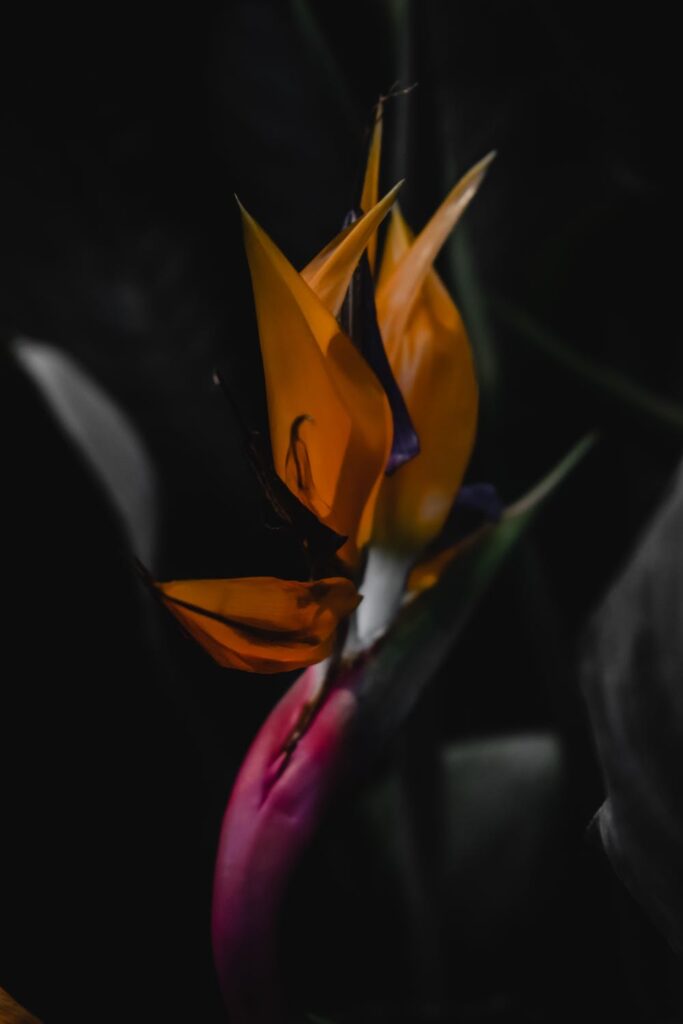Bird of Paradise is an exotic and stunning plant that is native to South Africa. It is also known as Strelitzia reginae, and it belongs to the Strelitziaceae family. This plant is known for its vibrant, tropical flowers that resemble the plumage of a bird in flight. While it is often grown outdoors, Bird of Paradise can also be cultivated as a houseplant, and it can add a touch of exotic beauty to any indoor space.
In this article, we will discuss everything you need to know about growing and caring for Bird of Paradise as a houseplant, including its light and water requirements, temperature preferences, soil needs, and more.
Table of Contents
Light Requirements
Bird of Paradise is a plant that loves bright, indirect light. As a houseplant, it should be placed near a window that receives plenty of natural light. A southern or western-facing window is ideal, as long as the plant is not exposed to direct sunlight, which can scorch its leaves. If your home doesn’t have a window with enough natural light, you can also use artificial grow lights to provide the plant with the light it needs.
Water Requirements
Bird of Paradise plants need to be watered regularly, but they do not like to be overwatered. Overwatering can lead to root rot, which can be fatal for the plant. The frequency of watering will depend on factors such as the size of the plant, the size of the pot, the humidity levels in your home, and the amount of light the plant receives. As a general rule, you should wait until the top of the soil feels dry before watering the plant again. When you do water, make sure to give the plant a thorough watering, allowing the water to drain out of the bottom of the pot. You should also avoid getting water on the leaves of the plant, as this can lead to fungal diseases.
Humidity Requirements
Bird of Paradise plants are native to tropical regions and require a high level of humidity to thrive. In a home with low humidity levels, the leaves of the plant can become dry and crispy. You can increase the humidity around the plant by placing a humidifier nearby, or by placing a tray of water near the plant. You can also mist the plant with water once or twice a week to provide it with extra moisture.
Temperature Requirements
Bird of Paradise plants prefer warm temperatures and do not tolerate cold temperatures well. They should be kept in a room with a temperature between 65 and 85 degrees Fahrenheit (18 and 29 degrees Celsius). Avoid placing the plant near drafty windows or doors, as this can cause temperature fluctuations that can stress the plant.
Soil Requirements
Bird of Paradise plants prefer well-draining soil that is rich in organic matter. A potting mix that contains peat moss, perlite, and vermiculite is ideal for this plant. You should also make sure that the pot has drainage holes in the bottom, as this will prevent water from pooling in the soil and causing root rot.
Fertiliser Requirements
Bird of Paradise plants are heavy feeders and require regular fertilisation to thrive. You should feed your plant every two weeks during the growing season (spring and summer) with a balanced fertiliser that contains equal parts nitrogen, phosphorus, and potassium. During the fall and winter, you can reduce the frequency of fertilisation to once a month.
Pruning Requirements
Bird of Paradise plants do not require regular pruning, but they may benefit from occasional trimming to keep their shape and remove dead or damaged leaves. You can also remove any flowers that have finished blooming to encourage the plant to produce new blooms.


Propagation
Bird of Paradise plants can be propagated through division or by seed. Division is the easiest method and should be done in the spring, when the plant is actively growing. To propagate Bird of Paradise through division, follow these steps:
- Choose a mature plant that has several healthy stems.
- Remove the plant from its pot and gently separate the stems, making sure each stem has its own root system.
- Repot each stem in a pot with fresh potting soil, and water the plants well.
- Place the newly potted stems in a bright location, but not in direct sunlight.
- Keep the soil moist but not soggy, and wait for new growth to appear.
Propagation by seed
Propagation by seed is a bit more challenging, but it can be done. To propagate Bird of Paradise by seed, follow these steps:
- Collect the seeds from a mature plant. The seeds are usually found in the seed pods that form after the flowers have bloomed.
- Soak the seeds in warm water for 24 hours to help soften the hard seed coat.
- Fill a pot with well-draining potting soil and plant the seeds 1 inch deep.
- Water the soil well and place the pot in a bright location.
- Cover the pot with a plastic bag to create a humid environment, and place it in a warm location with a temperature of around 70-75 degrees Fahrenheit (21 – 23 degrees Celsius).
- Check the soil regularly to make sure it stays moist, but not soggy.
- Once the seeds have sprouted, remove the plastic bag and continue to care for the plants as you would a mature Bird of Paradise.
Common Pests and Problems
Bird of Paradise plants are relatively low maintenance, but they can be susceptible to a few pests and problems. Here are some common issues you may encounter:
- Spider Mites: These tiny pests can infest the plant and cause yellowing and wilting leaves. You can treat spider mites with insecticidal soap or neem oil.
- Mealybugs: These white, cottony pests can also infest the plant and cause stunted growth and yellowing leaves. You can treat mealybugs with insecticidal soap or by wiping the plant down with a mixture of water and rubbing alcohol.
- Brown Tips on Leaves: This is usually caused by dry air or underwatering. Increase the humidity around the plant and make sure to water it regularly.
- Failure to Bloom: Bird of Paradise plants may fail to bloom if they are not getting enough light or if they are not being fertilised regularly. Make sure the plant is getting enough light and feed it every two weeks during the growing season.
Conclusion
Bird of Paradise is a stunning and exotic plant that can be grown as a houseplant with the right care and attention. By providing it with the right amount of light, water, humidity, and nutrients, you can enjoy the vibrant, tropical blooms of this beautiful plant in your own home. With a little patience and care, your Bird of Paradise can thrive and bring a touch of the tropics to your indoor space.

